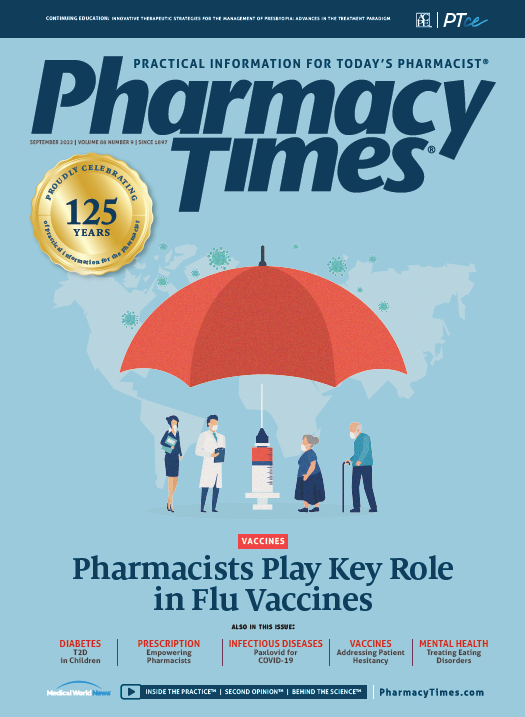Publication
Article
Pharmacy Times
Case Studies: September 2022
How would you respond to these patient questions?
Case 1: AL is a 29-year-old woman picking up ethinyl estradiol/norethindrone 1/20 (1 mg/20 mcg) tablets. While refilling the prescription, the pharmacist notices she recently picked up sumatriptan 10 mg nasal spray for acute migraine attacks. The pharmacist confirms AL’s migraine diagnosis, and AL mentions that since she has felt better using the spray. In fact, she brags she can predict her migraines because her arm starts tingling about an hour before her head begins to ache, alerting her to take sumatriptan.
Q: Based on this information, what should the pharmacist tell AL and her prescriber?
Case 2: A physician at a large primary care group asks a staff pharmacist about a 54-year-old woman with COVID-19 whose symptoms began 1 day earlier. The doctor prescribed a 5-day course of nirmatrelvir/ritonavir (Paxlovid) but noted the woman takes 300 mg of bupropion XL every day and recalled reading about a potential for drug-drug interaction between the 2 medications. The physician advised the patient to decrease the dose of bupropion by taking it every other day during treatment with Paxlovid to minimize the potential for toxicity. The doctor wants to know whether the pharmacist agrees with this recommendation.
Q: How should the pharmacist respond?
Case 1: AL appears to be experiencing migraine with aura. Approximately 25% of patients with migraines have language, motor, and/or sensory symptoms. The US Medical Eligibility Criteria for Contraceptive Use classifies a migraine with aura as “a condition that represents an unacceptable health risk if the contraceptive method is used.”1 Because AL takes an estrogen/ progestin contraceptive, she has an increased risk of stroke. However, the studies that form the basis for this conclusion are dated and were conducted on contraceptives with higher doses of estrogen.2 Therefore, the pharmacist should inform AL and her prescriber about the increased risk of stroke and ask whether AL has other risk factors for stroke such as hypertension or smoking. All parties should then share in the decision about whether AL should receive the contraceptive as prescribed or one containing only progestin.
References
1. Curtis KM, Tepper NK, Jatlaoui TC, et al. U.S. medical eligibility criteria for contraceptive use, 2016. MMWR Recomm Rep. 2016;65(3):1-104. doi:10.15585/mmwr.rr6503a1external icon
2. Calhoun AH. Hormonal contraceptives and migraine with aura-is there still a risk? Headache. 2017;57(2):184-193. doi:10.1111/head.12960
Case 2: The physician is correct in thinking bupropion could interact with Paxlovid. However, the consequence of such an interaction is not bupropion toxicity but loss of bupropion efficacy. Bupropion is metabolized by CYP2B6. Depending on dose, ritonavir, which is a CYP2B-inducer, can reduce bupropion plasma concentration.1 The interaction is considered weak because the ritonavir dose is low, and induction may take several days. Because treatment with Paxlovid lasts only 5 days, the pharmacist should tell the physician the bupropion dose does not need to be adjusted.2 The patient should be told not to decrease the bupropion dose but to take it daily as originally directed. If necessary, she should report any adverse effects or loss of efficacy to her primary care physician.
References
1. Park J, Vousden M, Brittain C, et al. Dose-related reduction in bupropion plasma concentrations by ritonavir. J Clin Pharmacol. 2010;50(10):1180-1187. doi:10.1177/0091270009359524
2. COVID-19 drug interactions. University of Liverpool. Accessed August 9, 2022. https://www.covid19-druginteractions.org/checker
About The Authors
Diana Levytska is a PharmD candidate at the University of Connecticut School of Pharmacy in Storrs.
Stefanie C. Nigro, PharmD, BCACP, CDCES, is an associate clinical professor in the Department of Pharmacy Practice at the University of Connecticut School of Pharmacy in Storrs.






